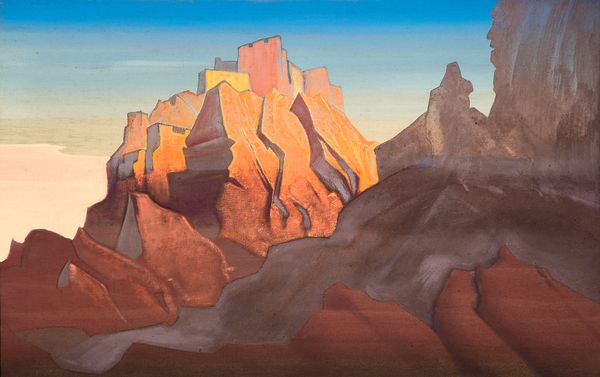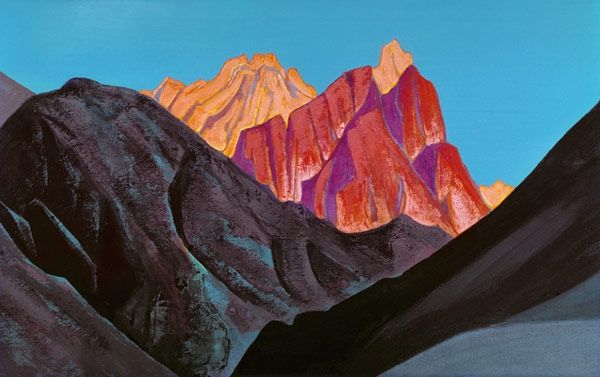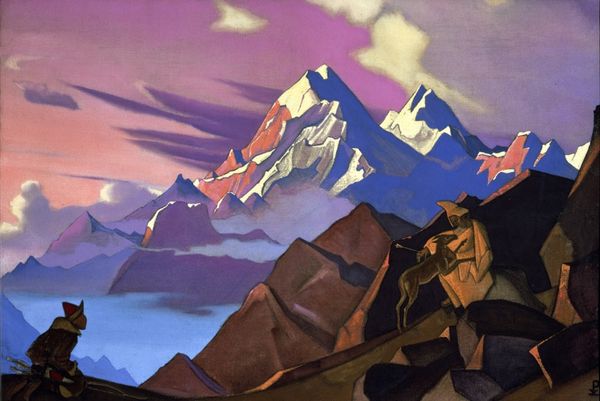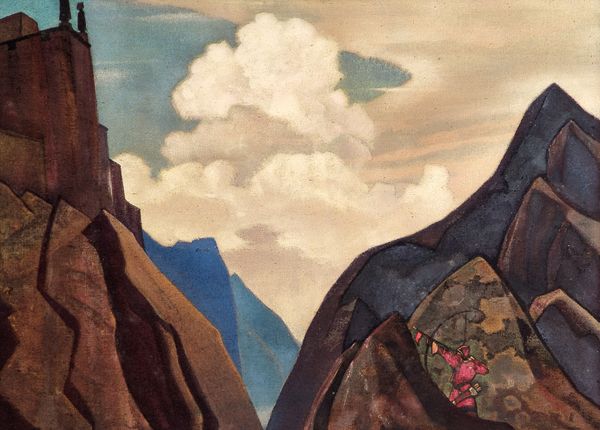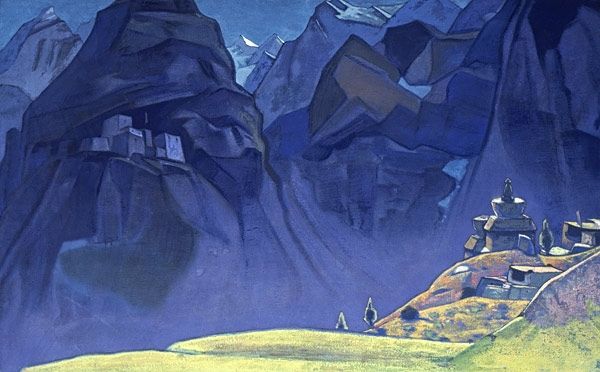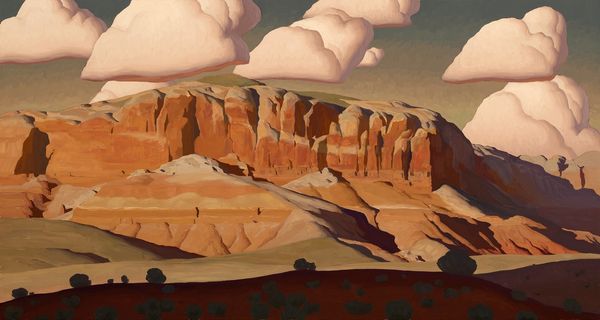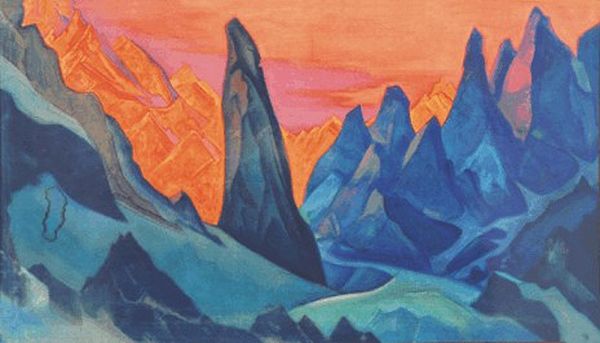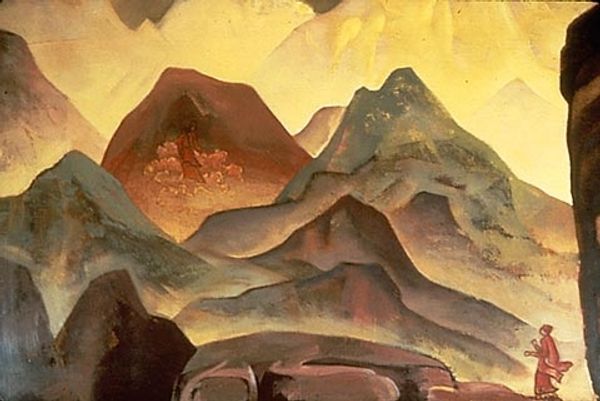
Dimensions: 76.5 x 103 cm
Copyright: Public domain
Curator: This is Nicholas Roerich's "Great Spirit of Himalayas," painted in 1934. Art Historian: It evokes a sense of stillness, doesn’t it? The mountains, rendered in muted blues and browns, create this profound, almost meditative, landscape. Curator: Absolutely. Roerich’s work is deeply rooted in symbolism and his personal spiritual beliefs. Consider the positioning. The mountain range, central to the composition, isn’t simply landscape; it embodies a spiritual power, particularly the face sculpted on the mountain's side. This wasn't just about aesthetics; it was a commentary. Art Historian: Precisely, and understanding that context is key. Roerich, with his deep interest in Eastern philosophy, portrays the Himalayas as a sacred space, a connection between the earthly and the divine. One may consider the sociopolitical dimensions in that cultural exchange. Curator: Roerich was working in a period of great global upheaval, right? So, to what extent do you think we can understand that appeal to Eastern spiritualism as an escape from or even a critique of Western modes of thought at the time? It feels especially potent now. Art Historian: Well, museums often displayed landscapes devoid of the contextual elements surrounding them, or, perhaps, the politics intertwined with it. But what about technique here? Notice the distinct art deco influence; he merges the spiritual with the modern. Curator: True. The oil paint application is also remarkable – almost dreamlike. It is that harmonious blend of colors – from the light blues above to the muted grays further down, a unifying aesthetic experience. Art Historian: Yes. All these are artistic choices embedded within broader social narratives of Roerich's moment. And its place within museum collections across the US definitely highlights particular cultural attitudes that continue to resonate. Curator: Agreed. Seeing how this piece merges artistic technique and symbolism opens a new lens to explore identity, race, and politics. Art Historian: For sure, it underlines how the socio-political frames the role of art and imagery for decades, even a century.
Comments
No comments
Be the first to comment and join the conversation on the ultimate creative platform.
